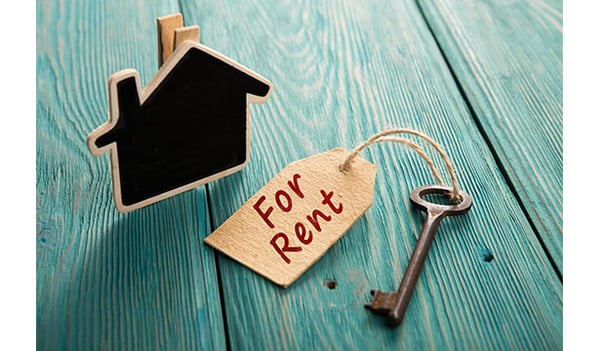What Are The Minimum Standards for Rental Properties in QLD And How To Meet Them?
At Place, our team are committed to keeping our landlords informed and up-to-date with all legislative changes, working closely with the REIQ to always follow best practice.
Changes are coming to the prescribed minimum housing standards as stated in schedule 5A of the Residential Tenancies and Rooming Accommodation Regulation 2009 (RTRA Regulation). Here's what you need to know.
These minimum housing standards will commence for new tenancies from 1 September 2023, and for all tenancies from 1 September 2024.
For residential tenancy agreements starting on or after 1 September 2023, lessors have just over six months to ensure that their premises and inclusions comply with any prescribed minimum housing standards when the tenancy starts and continue to comply during the tenancy.
1. Weatherproof and Structurally Sound
The premises must be weatherproof, structurally sound and in good repair. Premises are not weatherproof if the roofing or windows of the premises do not prevent water entering the premises when it rains.
2. Fixtures and Fittings
The fixtures and fittings, including electrical appliances, for the premises:- must be in good repair; and
- must not be likely to cause injury to a person through the ordinary use of the fixtures and fittings.
3. Locks on Windows and Doors
The premises must have a functioning lock or latch fitted to all external windows and doors to secure the premises against unauthorised entry. This only applies to the windows and doors that a person outside the premises could access without having to use a ladder.
4. Vermin, Damp and Mould
The premises must be free of vermin, damp and mould. However, this does not apply to vermin, damp or mould caused by the tenant, including, for example, caused by a failure of the tenant to use an exhaust fan installed at the premises.
5. Privacy
The premises must have privacy coverings for windows in all rooms in which tenants or residents are reasonably likely to expect privacy, including, for example, bedrooms. However, this does not apply to a window if a line of sight between a person outside the premises and a person inside the room is obstructed by a fence, hedge, tree or other feature of the property. Privacy covering for windows include any of the following:- blinds;
- curtains;
- tinting;
- glass frosting.
6. Plumbing and Drainage
The premises must have adequate plumbing and drainage for the number of persons occupying the premises, and be connected to a water supply service or other infrastructure that supplies hot and cold water suitable for drinking.
7. Bathrooms and Toilets
The bathroom and toilet facilities at premises must provide the user with privacy. In addition, each toilet must function as designed, including flushing and refilling, and be connected to a sewer, septic system or other waste disposal system.
8. Kitchen
A kitchen, if included, must include a functioning cook-top.
9. Laundry
A laundry, if included, must include the fixtures required to provide a functional laundry other than white goods.
What are the Implications for non-compliance with pre-scribed minimum housing standard by the upcoming deadline?
As outlined above, in accordance with s 185 of the Residential Tenancies and Rooming Accommodation Act 2008 (RTRA Act), the lessor must, at the start of the tenancy and while the tenancy continues, ensure that the premises and inclusions comply with any prescribed minimum housing standards.
Accordingly, if a lessor fails to comply with any prescribed minimum housing standards by the upcoming deadlines, it will open up the lessor to potential action from the tenant for breach of the tenancy agreement.
If this breach is not remedied, the tenant may issue the lessor with a notice of intention to leave and subsequently end the tenancy agreement by handing over vacant possession on or after the handover day.
Alternatively, the tenant can apply to the Tribunal under s 191 of the RTRA Act and seek an order requiring the lessor to remedy the failure to comply with s 185 and ensure that the premises and inclusions comply with any prescribed minimum housing standards.
The definition of “Emergency Repairs” in s 214 of the RTRA Act has also recently been amended to include works that are needed for the premises or inclusions to comply with the prescribed minimum housing standards.
In the circumstances, the tenant may seek to take advantage of s 218 of the RTRA Act and arrange for works that are needed for the premises or inclusions to comply with the prescribed minimum housing standards, if they have been unable to notify the lessor or nominated repairer of the need for emergency repairs or the repairs have not been made within a reasonable time.
If this occurs, the maximum amount that the tenant may incur for arranging emergency repairs is an amount equal 4 weeks rent payable under the tenancy agreement.
Alternatively, the tenant may apply to the Tribunal for a repair order in accordance with s 221 of the RTRA Act. If a repair order is granted by the Tribunal, it is an offence not to comply with the repair order unless there is a reasonable excuse.
What happens next?
Your property managers undergo regular compliance training to ensure they are well aware of which properties on their rent roll comply with the prescribed minimum housing standards, and which properties may need additional work to achieve compliance.
In these circumstances, instructions will be obtained from lessor clients to engage appropriate professionals to take the necessary steps to comply with the prescribed minimum housing standards by the relevant deadlines.
If you have any questions at all about these standards and your investment property, please reach out to your dedicated property manager who will be more than willing to assist you.
